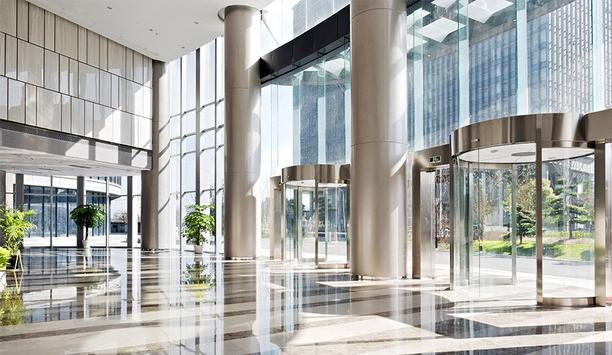Post-COVID workplaces will inevitably look different. Changes to working patterns will drive more agile and sociable workplace design. But regulations must keep up with developments. In late January, the UK Government proposed the ‘future of buildings standards’. These proposed updates come at a time when many landlords and site managers will be contemplating changes in response to altered workplace use and demand. As workplaces begin to reopen, organizations have an opportunity to improve and future-proof sites.
Challenges in the post-COVID workplace
Research, including surveys from YouGov and CIPD, has found that those able to work from home would prefer to work remotely for at least part of the week. Many organizations are expecting to move to a hybrid approach. This poses a challenge for managers. Sites that continue to use previous layouts are potentially wasting large amounts of costly space with individual workplaces that are rarely at full occupancy. On the other hand, those that choose to downsize will need to introduce effective booking or management systems to prevent overpopulating. New layouts must comply with space measures, for example ensuring safe and accessible fire exits, and cater to varying use. Systems such as heating and ventilation may see demand fluctuate over the course of a single week. Sites that continue to use previous layouts are potentially wasting large amounts of costly space with individual workplaces that are rarely at full occupancy.
Different working styles pose different challenges and facilities providers will need to be kept in the loop. Hot-desking, for example, may be a popular way to streamline space but increases the need for cleaning and sanitisation so cleaning providers must be aware of these changes and adapt their solutions.
Managing building systems effectively may be more important than ever in the post-COVID era. Mental and physical health have been thrust into the limelight. As a population, we have been forced to become more conscious of public spaces that may spread disease. People are increasingly focused on improving their physical health as a result. This new awareness may well be carried into the workplace. The trauma and challenges of a global pandemic have also made more people conscious of their mental health. Remote working has both benefited and tested workers. Managers will be responsible for creating workplaces in which their employees can thrive or risk them opting to stay at home.
Building systems can have a huge influence on the well-being of workers. Increased natural light and biophilic design are well known for their benefits to wellbeing but a researcher from Harvard T.H. Chan School of Public Health found that improved ventilation can significantly improve worker wellbeing and, as a result, productivity. His research suggests that on average doubling the ventilation in workplaces, at a cost of $40 USD per head could produce a productivity boost worth $6,500 USD per head.
Choosing the right Heating and Ventilation systems
Post-COVID building design needs to reflect new priorities as well as evolving working patterns and do so in a way that is safe, efficient, and compliant. Organizations must take time to consider how their sites are operating and which features may compromise employee experience.
We are entering a new era of working and even employees may find their preferences change from what they imagine as they get used to hybrid working.
Certain safety and compliance measures can come at a cost to comfort. For example, many organizations have increased the amount of fresh air introduced through ventilation systems as a means of reducing the risk of COVID transmission. This improves safety but reduces the system’s capacity to maintain a constant temperature.
Organizations will want to adapt workplace systems and processes to suit new working patterns, but it is hard to predict those patterns. Many people imagine bookending their week with work from home days but those looking for quiet space may choose to use the office on its least popular days. Different teams will have different demands on space and resources and their working patterns will adjust accordingly. It is crucial, therefore, that managers keep track of changes to office space and adjust accordingly.
Finding rarely used spaces and introducing sensor-activated heating and lighting is one option that may significantly improve efficiency, making the office cheaper and greener to run. Understanding space use can also be used to prioritize facilities management services so as not to overstretch staff.
Data-led solutions
The reality is that modern building systems are usually designed for a site working at full capacity. Over the past year, many have been vacant or functioning at low capacity. As a result, additional care has been required e.g., flushing pipes for legionella. Adapting to hybrid working will demand its own adjustments that cannot be made through guesswork.
Research from McKinsey and Co. finds that workplace technological transformation has been accelerated by years due to the pandemic. Systems such as passive infrared occupancy sensors or workspace booking systems are becoming near-ubiquitous as they allow managers to make accurate adjustments.
Such data-led solutions will be at the heart of workplace evolution and will continue to offer a return into the future. These systems can be used to improve workplace efficiency by more accurately catering services to use. This will create cheaper and greener buildings. These user-friendly spaces will also be more appealing to workers, encouraging them to come together for creative work rather than opting to work remotely.
The post-COVID workplace actively attracts its users by providing features that remote work cannot. Workers will expect their workplaces to demonstrate care for mental and physical health and productivity. We will undoubtedly see even more pressure from organisations to create greener spaces as the UK aims for net-zero by 2050. Thus, healthy buildings and healthy users should be at the fore of employers’ minds as they reopen their workplaces. This is an opportunity for organizations to create real positive change in their workplace that continues to offer a return in the coming years.


















